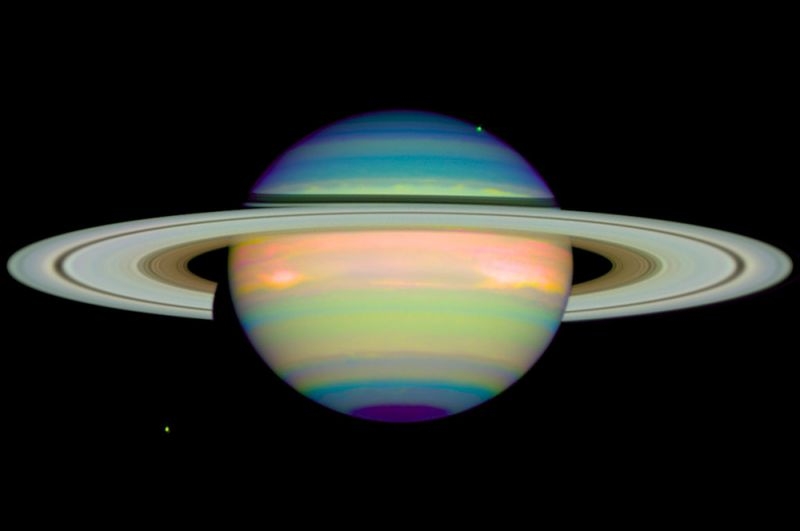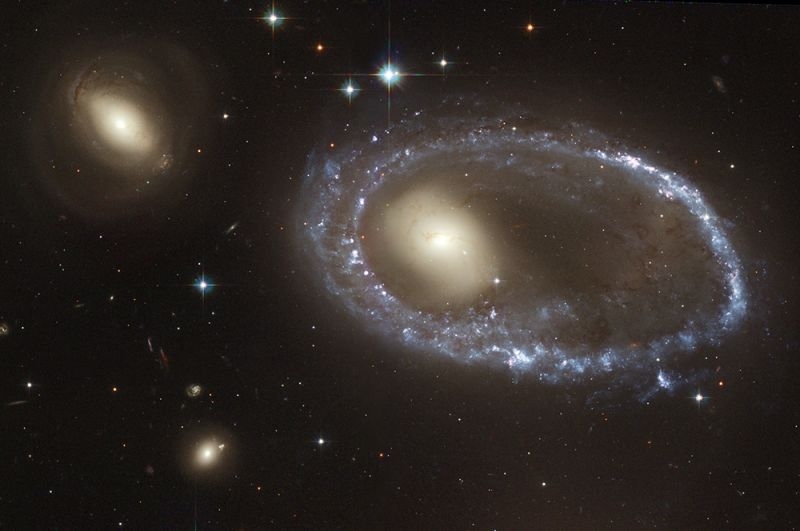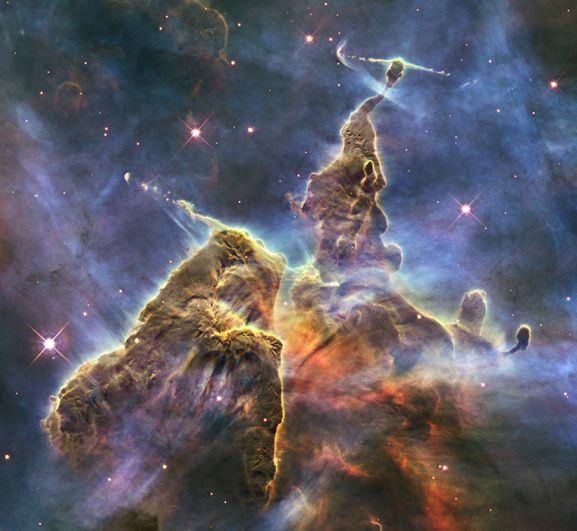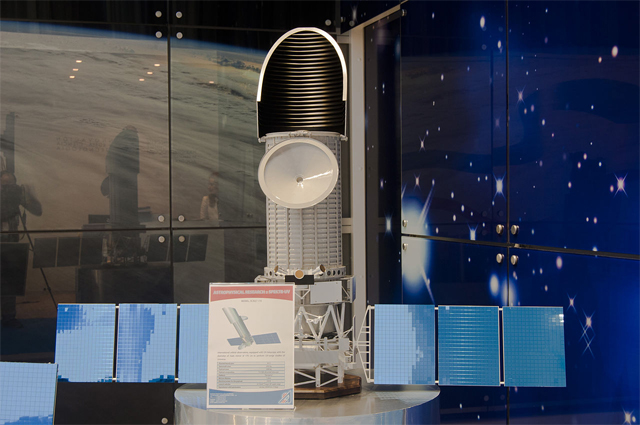Roskosmos and his subordinate NGO named after S.A. Lavochkin signed a contract worth 3.68 billion rubles. The money will go towards the creation of the Russian Ultraviolet Space Telescope Spectr-UF. Previously, 2.9 billion rubles had already been allocated to it.
What is this device and why is it needed?
The “Spectrum-UV” (or “World Space Observatory – Ultraviolet”) astrophysical observatory is designed to obtain images and observations in the part of the ultraviolet spectrum that is not available for ground telescopes. It will be the third device in the Spectrum series. Spectr-R was launched in 2011, Spektr-RG – in 2019. Spectr-UV is expected to be sent to space in October 2025. After him there will be another fourth project – “Spectrum-M”.

“Spectrum-UV” – “World Space Observatory” (VKO-UV), model. Photo: Commons.wikimedia.org
In terms of capabilities, Spectr-UV is close to the famous American Hubble telescope. It has only just completed its mission, and not a single space agency, except Roskosmos, is currently developing a new large ultraviolet telescope. Thus, our Spectrum-UV will be the only device in this segment of scientific research at least until 2035.
“There are even baseless feelings in the Western press that Russia will have monopoly on ultraviolet light and share it will not be, “said Mikhail Sachkov, deputy director of research at the Institute of Astronomy of the Russian Academy of Sciences, in an interview with RT .
According to the specialist, if we compare the capabilities of the Hubble and the Spectra-UF, the Russian device seems preferable: “Despite the fact that the main mirror of our device is smaller than that of the Hubble, the comparison may be in our favor. . The diameter of the Hubble's main mirror is 2.4m, while ours is 1.7m. The permeability of ours should, in theory, be less. But we create equipment later, we use a more efficient optical system, modern radiation receivers, so this difference is compensated.
We surpass Hubble in efficiency at certain wavelengths. Another plus is the orbit. The Hubble flies in low earth orbit – up to 600 km above the Earth's surface. We will fly in a 35,000 km geostationary orbit. What's the advantage? We will study the Universe without a hydrogen shell close to Earth, which interferes with observations in the ultraviolet, we will fly over most of its denser layers. “
The best Hubble Telescope images ever made

Jupiter. This is the first color photograph of the planet Jupiter taken in 1991 with the wide-angle camera of the Space Telescope. © Flickr.com/NASA, ESA and J. Westphal (Caltech)

“Pillars of Creation” in the Eagle Nebula. The objects in the photograph received this name because the gas and dust they contain are involved in the formation of new stars with the simultaneous destruction of clouds under the light of already formed stars. The photo was taken in 1995. © Flickr.com/NASA, ESA, STScI, J. Hester and P. Scowen (Arizona State University)

Saturn infrared. The image was taken on January 4, 1998 and shows reflected infrared light from the planet, which gives detailed information about the clouds and haze in Saturn's atmosphere. © Flickr.com/Erich Karkoschka (University of Arizona) and NASA

Jupiter, its moon Io and the shadow of the satellite falling to the surface of the planet. year 1999. © Flickr.com/John Spencer (Lowell Observatory) and NASA

The Horse's Head Nebula in the constellation Orion is one of the most photographed objects in space. The photo was taken in 2001. © Flickr.com/NASA, NOAO, ESA and The Hubble Heritage Team (STScI/AURA); Acknowledgments: K. Noll (Hubble Heritage PI/STScI), C. Luginbuhl (USNO), F. Hamilton (Hubble Heritage/STScI)

The Cone Nebula. “This object,” writes NASA, “resembling a nightmare beast raising its head from a crimson sea, is actually a harmless column of gas and dust.” Photo was taken in 2002. © Flickr.com/NASA, H. Ford (JHU), G. Illingworth (UCSC/LO), M. Clampin (STScI), G. Hartig (STScI), the team scientist ACS and ESA; The ACS Science Team: H. Ford, G. Illingworth, M. Clampin, G. Hartig, T. Allen, K. Anderson, F. Bartko, N. Benitez, J. Blakeslee, R . Bouwe

The Omega Nebula, 2003. © Flickr.com/NASA, ESA and J. Hester (ASU)

A ring of blue stars around the galaxy AM 0644-741. It is assumed that the ring formed during a collision with another galaxy, while due to gravitational destruction the dust in the galaxy is compacted and forms stars. year 2004. © Flickr.com/NASA, ESA and Hubble Heritage Team (AURA/STScI); Acknowledgments: J. Higdon (Cornell U.) and I. Jordan (STScI)

Whirlpool Galaxy or M 51 in the constellation Hounds Dogs. The photo was taken in 2005. © Flickr.com/NASA, ESA, S. Beckwith (STScI) and Hubble Heritage Team (STScI/AURA)

A nebula in the constellation Carina. 2007 year. © Flickr.com/N. Smith (University of California, Berkeley) and NOAO/AURA/NSF

Interacting galaxies. Astronomy textbooks generally present galaxies as lonely, majestic worlds of twinkling stars. But galaxies can be located in space close enough that mutual gravity significantly affects the shape, motion, processes of star formation, and in some cases the exchange of matter between them. . Photos from 2008. © Flickr.com/NASA, ESA, Hubble Heritage (STScI/AURA) -ESA/Collaboration Hubble, and A. Evans (University of Virginia, Charlottesville/NRAO/Stony Brook University)

“Mystic Mountain” inside the Carina Nebula. This cosmic peak, three light years high, is made up of dust and gas and shows signs of intense star formation. Snapshot from 2010. © Flickr.com/NASA, ESA and Hubble Heritage Team (STScI/AURA)
The best Hubble Telescope images ever made

Jupiter. This is the first color photograph of the planet Jupiter taken in 1991 with the wide-angle camera of the Space Telescope. © Flickr.com/NASA, ESA and J. Westphal (Caltech)

“Pillars of Creation” in the Eagle Nebula. The objects in the photograph received this name because the gas and dust they contain are involved in the formation of new stars with the simultaneous destruction of clouds under the light of already formed stars. The photo was taken in 1995. © Flickr.com/NASA, ESA, STScI, J. Hester and P. Scowen (Arizona State University)

Saturn infrared. The image was taken on January 4, 1998 and shows reflected infrared light from the planet, which gives detailed information about the clouds and haze in Saturn's atmosphere. © Flickr.com/Erich Karkoschka (University of Arizona) and NASA

Jupiter, its moon Io and the shadow of the satellite falling on the surface of the planet. year 1999. © Flickr.com/John Spencer (Lowell Observatory) and NASA

The Horse's Head Nebula in the constellation Orion is one of the most photographed objects in space. The photo was taken in 2001. © Flickr.com/NASA, NOAO, ESA and The Hubble Heritage Team (STScI/AURA); Acknowledgments: K. Noll (Hubble Heritage PI/STScI), C. Luginbuhl (USNO), F. Hamilton (Hubble Heritage/STScI)

The Cone Nebula. “This object,” writes NASA, “resembling a nightmare beast raising its head from a crimson sea, is actually a harmless column of gas and dust.” Photo was taken in 2002. © Flickr.com/NASA, H. Ford (JHU), G. Illingworth (UCSC/LO), M. Clampin (STScI), G. Hartig (STScI), the team scientist ACS and ESA; The ACS Science Team: H. Ford, G. Illingworth, M. Clampin, G. Hartig, T. Allen, K. Anderson, F. Bartko, N. Benitez, J. Blakeslee, R . Bouwe

The Omega Nebula, 2003. © Flickr.com/NASA, ESA and J. Hester (ASU)

A ring of blue stars around the galaxy AM 0644-741. It is assumed that the ring formed during a collision with another galaxy, while due to gravitational destruction the dust in the galaxy is compacted and forms stars. year 2004. © Flickr.com/NASA, ESA and Hubble Heritage Team (AURA/STScI); Acknowledgments: J. Higdon (Cornell U.) and I. Jordan (STScI)

Whirlpool Galaxy or M 51 in the constellation Canis Hounds. The photo was taken in 2005. © Flickr.com/NASA, ESA, S. Beckwith (STScI) and Hubble Heritage Team (STScI/AURA)

A nebula in the constellation Carina. 2007 year. © Flickr.com/N. Smith (University of California, Berkeley) and NOAO/AURA/NSF

Interacting galaxies. Astronomy textbooks generally present galaxies as lonely, majestic worlds of twinkling stars. But galaxies can be located in space close enough that mutual gravity significantly affects the shape, motion, processes of star formation, and in some cases the exchange of matter between them. . Photos from 2008. © Flickr.com/NASA, ESA, the Hubble Heritage (STScI/AURA) -ESA/Hubble Collaboration, and A. Evans (University of Virginia, Charlottesville/NRAO/Stony Brook University)

What are its science goals?
Spectra-UV's main instrument will be an ultraviolet telescope with a main mirror 1.7 meters in diameter. The scientific task of the project is to obtain new data of a fundamental nature in several fields of astrophysics. These are the physicochemical composition of the planetary atmospheres of the solar system, the physics of stars and the phenomena found in them, the nature of active galactic nuclei, the evolution of galaxies, matter exchange processes with the intergalactic medium, properties of circumstellar matter, matter hidden in the Universe, and much more. As for exoplanets, Spectr-UF will not look for them, but it will have to observe previously discovered exoplanets in order to study their atmosphere and, in particular, to look for signs of life on them. Therefore, it is possible that if the existence of life in distant worlds is reliably confirmed, the discovery will be made by the Russian device.
Spain is also involved in the project. It provides the key elements of the Radiation Receiver and Filter set. But other countries are showing interest as well, for example Japan.

